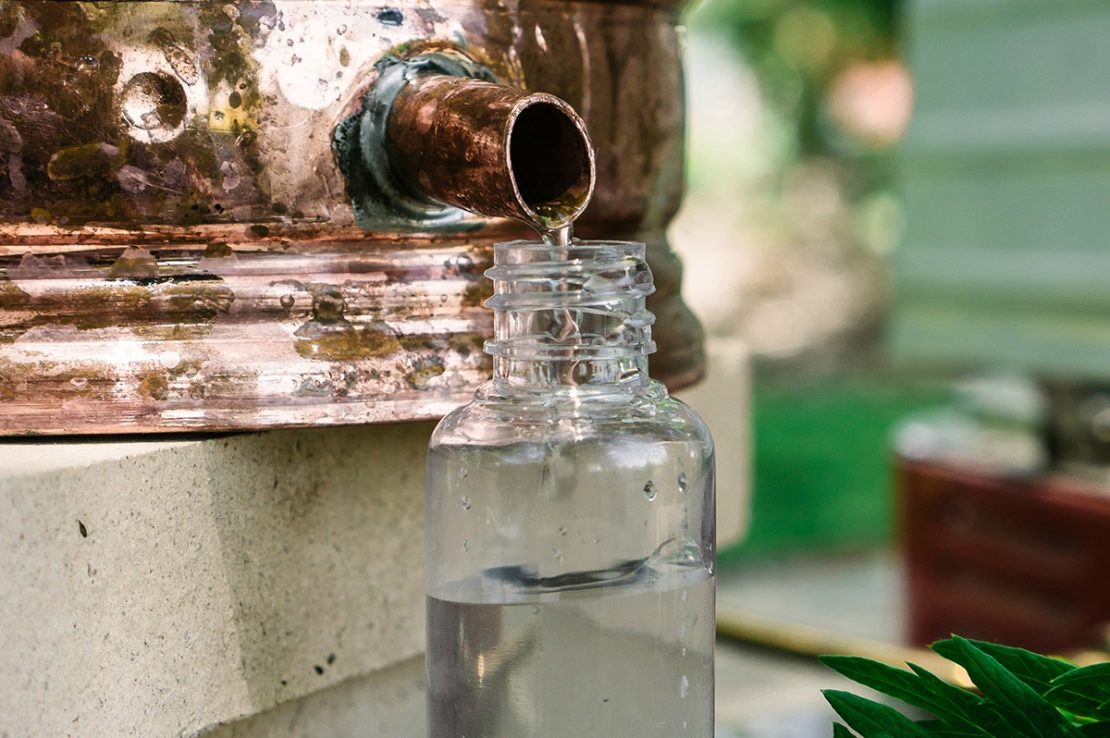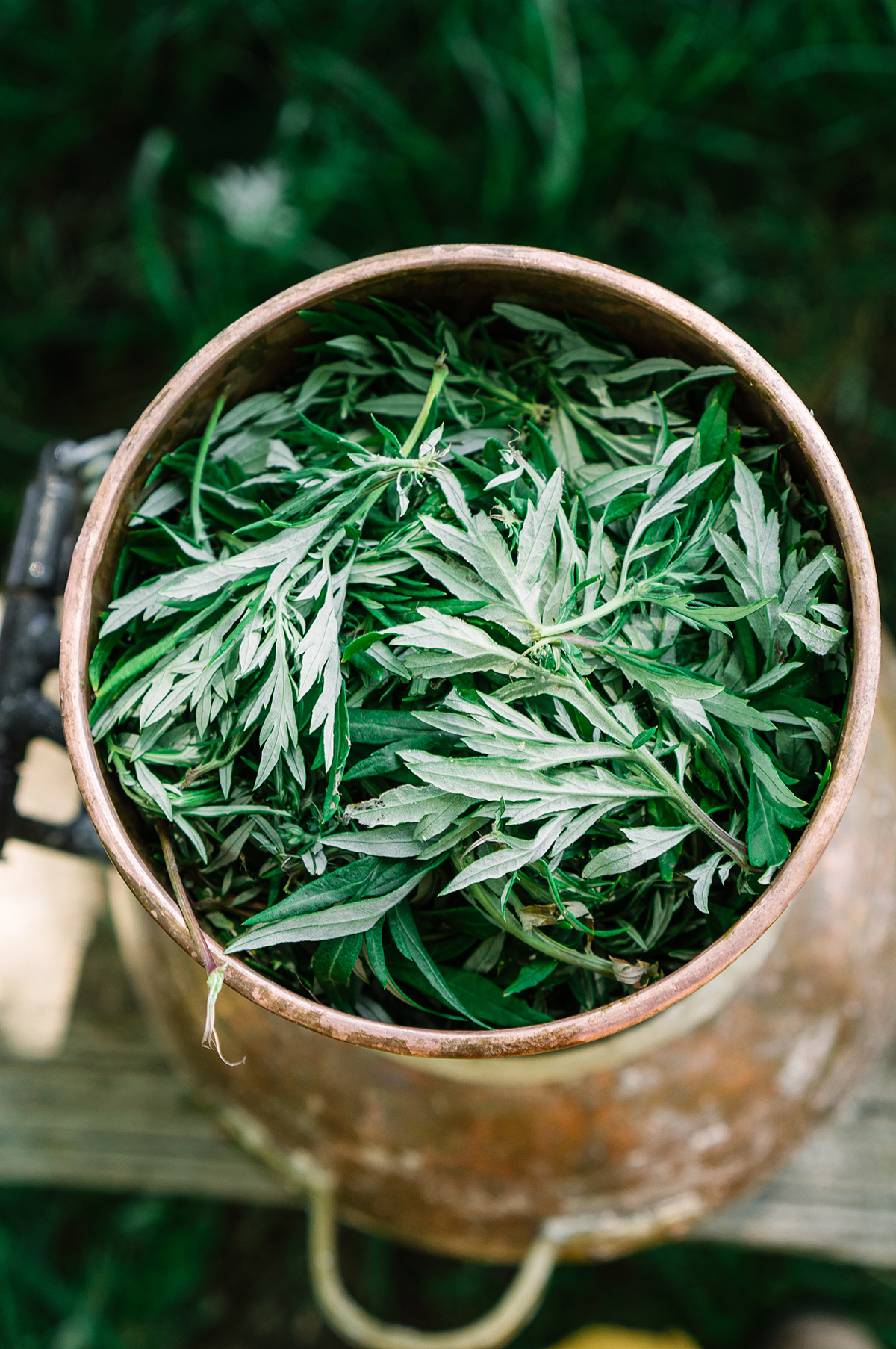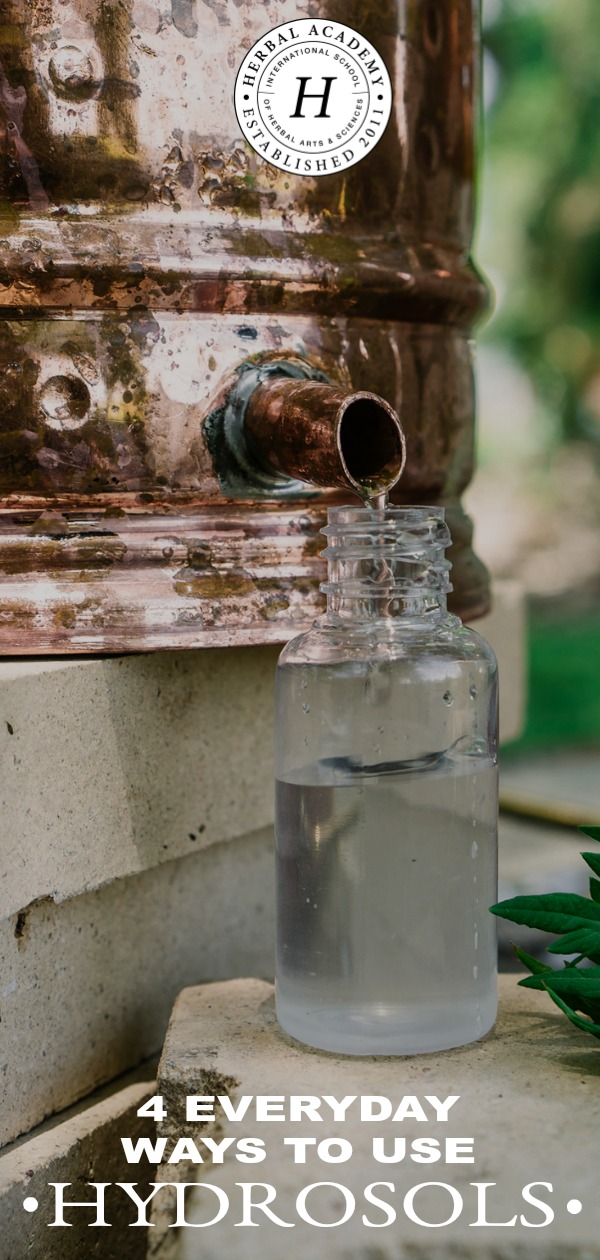
4 Everyday Ways To Use Hydrosols
I studied herbalism for nearly seven years before I stumbled across hydrosols! When I finally started researching how to use hydrosols, I was amazed that this safe and versatile product wasn’t more popular. Aromatherapist and herbalist Cathy Skipper calls hydrosols “the quiet revolution in plant medicine” (AromaGnosis, 2019), and indeed, they’ve started to gain more widespread recognition as more people experience their incredible aromas, versatile uses, and sustainability benefits.
Hydrosols 101
Hydrosols are distilled floral waters. Whether you realize it or not, you may already be familiar with three examples of hydrosols that have withstood the test of time: witch hazel, rose water, and orange blossom (neroli) water. The term “hydrosol” is used to help differentiate these high-quality distilled waters from commercial “floral waters” that are often nothing more than essential oils combined with tap water.
Hydrosols are made from a wide variety of aromatic and non-aromatic plant material, including leaves such as peppermint (Mentha x piperita), flowers such as calendula (Calendula officinalis), rhizomes such as ginger (Zingiber officinale), fruits such as cucumber (Cucumis sativus), and even seeds such as fennel (Foeniculum vulgare). Because hydrosols are water-based and much less potent than essential oils, they’re easy to blend into therapeutic, cosmetic, culinary, and household recipes. The majority of hydrosols are even gentle enough to use with children (when diluted), older adults, and pets.

When shopping for hydrosols–especially if you plan on consuming them internally–it’s important to find pure, undiluted hydrosols that have been distilled in sanitary conditions, refrigerated for maximum shelf life, and tested for microbial contamination. If a hydrosol is past its prime, you will see what’s called a “bloom” of white, thread-like substances floating in the water. For this reason, be sure to store your hydrosols in clear glass bottles in the refrigerator and to stay mindful of their expiration date. Typically, store-bought hydrosols have a shelf life of approximately 1 year when properly stored in the refrigerator.
Even though hydrosols are made using the same distillation process as essential oils, they’re much more sustainable because you get a significantly larger amount of hydrosol per distillation than you do essential oil. Hydrosols are also easy to distill at home using common kitchen equipment and fresh plant material that you’ve either grown yourself or foraged sustainably. If you fall in love with the process, then you may join the growing ranks of herbalists and aromatherapists who are investing in their own copper still to make even higher quality hydrosols at home.

Use homemade hydrosols within two weeks if made on the stovetop and six months if made with a copper still. Be sure to store them in the refrigerator and to keep your eyes open for the tell-tale microbial “bloom” that represents contamination.
4 Everyday Ways To Use Hydrosols
Wellness Uses for Hydrosols
Internal uses: A plant’s hydrophilic (water-loving) compounds are extracted into hydrosols much as they are into herbal tea. Hydrosols can be used internally, with caveats – see safety discussion below.
Aromatherapist Suzanne Catty describes hydrosols as “herbal espressos” in her book Hydrosols: The Next Aromatherapy, and as such these concentrated substances should be diluted in water rather than consumed neat (Catty, 2001). The standard dilution rate when using hydrosols internally is two tablespoons of hydrosols in one liter of water (Catty, 2001). Try starting with a small amount and see how your body responds. Catty recommends drinking diluted coriander (Coriandrum sativum), fennel (Foeniculum vulgare), or basil (Ocimum basilicum) hydrosol for digestive support, elecampane (Inula helenium) hydrosol for allergy aid, peppermint (Mentha x piperita) hydrosol to soothe headaches, and Roman chamomile (Chamaemelum nobile) hydrosol as a sleep aid (Catty, 2001).
Although many hydrosols are safe for all age groups, there are occasional contraindications. The properties and uses of hydrosols are based on anecdotal evidence (Price & Price, 2007), and it is always important to research a hydrosol thoroughly before consuming it internally. It’s also wise to consider working with a certified aromatherapist if you have pre-existing health conditions or would like to use hydrosols for a child. Note that children under the age of three should not consume peppermint hydrosol internally. Commercially available witch hazel hydrosol should not be used internally as it’s likely to contain unsafe preservatives (Catty, 2001). Many other commercially available hydrosols may also contain preservatives and may not be intended for internal use, so make sure to read the label.
External uses: Because hydrosols are 100% water-based, they can easily be stirred into bath water or sitz baths for a therapeutic soak. The amount of hydrosol that you add to the bathtub will depend on the age of the person taking the bath, starting with just 1/2 teaspoon for an infant and up to 1 cup for a full-sized adult (Catty, 2001).
You can also dilute one part hydrosol with four parts warm salt water to use as the saline solution in your neti pot or as a gargle if you have a sore throat. Dilute one part hydrosol with 10 parts of saltwater for children (Catty, 2001).
When used externally with adults, hydrosols don’t need to be mixed with a carrier or diluted before being applied. When working with children, it’s always a good idea to dilute a hydrosol by approximately 50% with water or aloe. Many aromatherapists recommend spraying astringent, antiseptic hydrosols, such as yarrow (Achillea millefolium) or thyme (Thymus vulgaris) (Harman, 2015), on wounds to help clean and sanitize them or mixing the hydrosol with clay or powdered herbs for a homemade poultice. Hydrosols are also a fabulous natural eye rinse–we keep calendula (Calendula officinalis) hydrosol on hand to spray our eyes after doing yard work during allergy season, and it’s amazing how quickly it offers cooling support! Cornflower (Centaurea cyanus) hydrosol is often recommended as a substitute for eye drops (Stillpoint Aromatics, n.d.), and I find it wonderfully soothing after long, international flights when the cabin air dries out my eyes.

Hydrosols for Cosmetic Use
If you’ve used witch hazel as a facial toner, then you’ve already been introduced to hydrosol’s most straightforward cosmetic application. Try spritzing a hydrosol directly on your face after washing it and before applying a cream moisturizer. Lemon thyme (Thymus citriodorus), rose geranium (Pelargonium graveolens), and lavender (Lavandula angustifolia) hydrosols are all excellent options for this application depending on your skin type (Evanhealy, n.d.a; EvanHealy, n.d.b; EvanHealy, n.d.c).
You can make your homemade lotions and creams even more decadent by replacing the water in the recipe with the hydrosol of your choice. Rose (Rosa damascena), cucumber (Cucumis sativus), and Roman chamomile (Chamaemelum nobile) hydrosols are all particularly well-suited to homemade creams. Watch as I join Rosemary Gladstar to help concoct her incredible face cream with a rose hydrosol, here.
Hydrosols make excellent makeup removers, and cotton pads soaked in cucumber (Cucumis sativus) hydrosol can help reduce red, puffy eyes when fresh cucumber slices aren’t available. Try adding a few tablespoons of a hydrosol to a facial steam or mix it with clay or oatmeal for a truly decadent homemade face mask.
As you can see, the options for using hydrosols in safe, all-natural cosmetic recipes are nearly endless!
Cooking with Hydrosols
My favorite way to consume hydrosols is also the easiest–I simply add a splash to my sparkling water. The natural flavor helps me drink more water throughout the day, plus I love knowing that the flavor has zero calories or added sweeteners. Try adding a ½ teaspoon of rose (Rosa damascena) hydrosol to your glass of iced tea, lavender (Lavandula angustifolia) hydrosol to your lemonade, cinnamon (Cinnamomum verum) hydrosol to your chai, or neroli (Citrus aurantium) hydrosol to your mimosa. You’ll be glad you did! (See safety notes above.)
After quite a bit of kitchen experimentation, my partner and I have learned that hydrosols retain their flavor best if you don’t apply much heat. We’ve had great success using a few teaspoons of rose (Rosa damascena) hydrosol in homemade sorbets and basil (Ocimum basilicum) hydrosol in a simple, homemade salad dressing with olive oil, apple cider vinegar, and mustard. Orange blossom (neroli) (Citrus aurantium) hydrosol is traditionally used to sweeten baklava. Think of culinary hydrosols as a “liquid spice.”
Cleaning with Hydrosols
Many people use essential oils in their homemade cleaning products, but I prefer to use hydrosols because they’re more sustainable, water-soluble, and can lend antimicrobial properties (Harman, 2015). For streak-free windows, combine ¼ cup of lemon (Citrus x limon) hydrosol with 1 cup of rubbing alcohol or 190-proof grain alcohol. And do try the following recipe for my favorite countertop spray!
Lemon Thyme All-Purpose Cleaning Solution
¼ cup thyme (Thymus vulgaris) hydrosol
½ cup baking soda
Distilled white vinegar, to fill.
- Combine the hydrosol and baking soda in a 16 fluid ounce empty spray bottle. Fill to the top with distilled white vinegar and shake to combine.
- This versatile spray can be used to clean countertops, sinks, dusty surfaces, and any other areas of your home that need an uplifting polish.
Thyme (Thymus vulgaris) hydrosol is antimicrobial (Harman, 2015), which is why it’s great in homemade cleaning products for an added punch. If you don’t like the smell of thyme, then try using lemon thyme (Thymus citriodorus) hydrosol instead!
Lavender (Lavandula angustifolia) and cedarwood (Cedrus atlantica) hydrosols both make wonderful linen sprays, and I’ll often add a few tablespoons to my steamer or iron, spritz my closet, or add a hydrosol-soaked cloth to the dryer. After my hydrosols have passed their prime, I add them to a bucket of warm water and vinegar to wash my floors and lend a bright and uplifting scent to my home! Expired hydrosols can also be diluted and used to water plants.

Hydrosol’s Energetic Properties
When you spritz a hydrosol and then deeply inhale, you feel as though you’re standing in a field full of that plant. I’ve spent years kneeling in gardens and making plant preparations, but it was only after deeply inhaling a hydrosol that I understood what people meant when they talk about plant communication. Personally, I believe that our bodies are more easily able to tune in to the energetic properties of hydrosols–compared to essential oils or live plants–because our bodies are also made up of so much water (up to 60% of the adult human body is made of water (USGS, n.d.)!).
If you’re interested in Bach flower remedies, homeopathy, or energetic work, then I’d encourage you to research the energetic properties of hydrosols in greater detail.
Conclusion
I’ve truly enjoyed adding aromatic hydrosols to my herbal toolkit, and I hope you find them as versatile, soothing, and pleasurable as I do. If you’re interested in learning more about these water-based preparations, then I recommend exploring the resources below, particularly the books by Ann Harman and Suzanne Catty, both of which have proven themselves to be invaluable references. You can also learn more about making homemade hydrosols and using them in your skincare routine in the Herbal Academy’s new Botanical Skin Care Course!
Recommended Resources
To learn more about hydrosols–including where to buy them and how to make your own–check out some of my favorite resources, below.
Where to Buy Hydrosols
Aromatics International
How to Make Your Own Hydrosols
How to Use a Copper Still to Make Your Own Hydrosols (Video)
How to Make Hydrosols on the Stovetop
Distillation Equipment
Books
Hydrosols: The Next Aromatherapy by Suzanne Catty
Harvest to Hydrosol by Ann Harman
Understanding Hydrolats: The Specific Hydrosols for Aromatherapy by Len Price & Shirley Price

REFERENCES
AromaGnosis Online School. (2019). Hydrosols – The quiet revolution in medicine! Retrieved from https://aromagnosis.com/2019/03/21/hydrosols-the-quiet-revolution-in-plant-medicine/
Catty, S. (2001). Hydrosols: The next aromatherapy. Rochester, VT: Healing Arts Press.
EvanHealy (n.d.a). Lavender hydrosoul. Retrieved from https://www.evanhealy.com/lavender-facial-tonic-hydrosoul-c.html
EvanHealy (n.d.b). Lemon thyme hydrosoul. Retrieved from https://www.evanhealy.com/lemon-thyme-facial-tonic-hydrosoul-c.html
EvanHealy (n.d.c). Rose geranium hydrosoul. Retrieved from https://www.evanhealy.com/rose-geranium-facial-tonic-hydrosoul-c.html
Harman, A. (2015). Harvest to hydrosol. Fruitland, WA: IAG Botanics LLC
Price, L., & Price, S. (Eds.) (2007). Aromatherapy for health professionals, 3rd ed.. London: Churchill Livingstone Elsevier.
Stillpoint Aromatics. (n.d.). Cornflower organic hydrosol. Retrieved from https://www.stillpointaromatics.com/cornflower-organic-hydrosol
United States Geological Survey (n.d.). The water in you: Water and the human body. Retrieved from https://www.usgs.gov/special-topic/water-science-school/science/water-you-water-and-human-body?qt-science_center_objects=0#qt-science_center_objects







